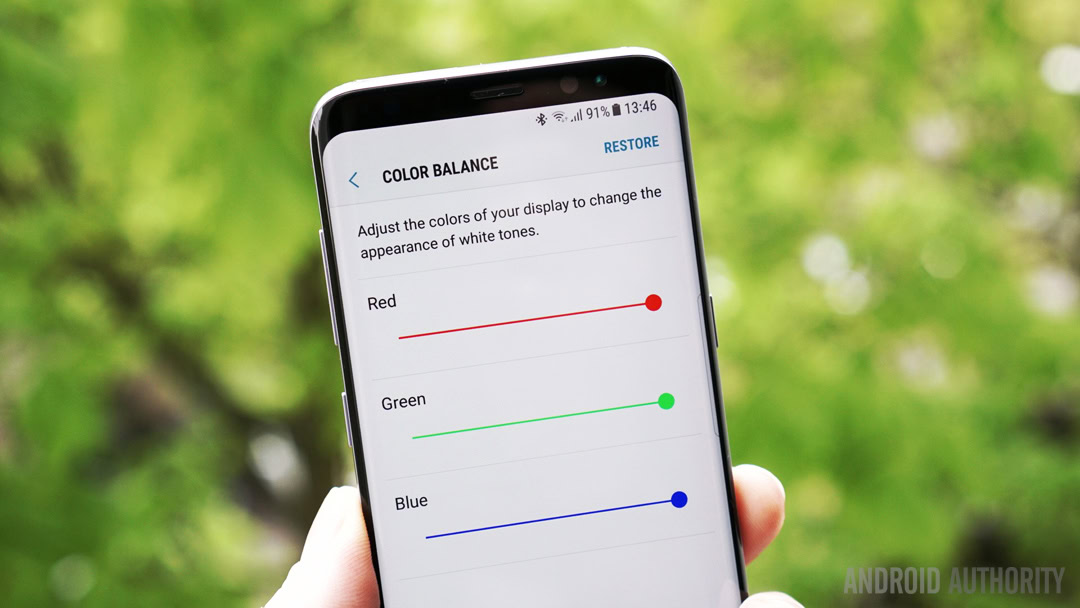Affiliate links on Android Authority may earn us a commission.Learn more.
Samsung Galaxy S8 display burn-in: should you be worried?
June 09, 2025
Samsung’s Galaxy S8 and S8 Plusdisplays have come under fire a couple of times since their release. Once because of an issue with ared color bias, and another time with regard to burn-in problems. The latter has appeared onReddit(where the image below is from) andThe Korea Heraldalso mentioned it in a separate case.
Samsung has addressed the first of those issues itself, but I want to outline some thoughts on how big of a concern the second problem is.

What is screen burn-in?
Screen burn-in, not to be confused with the similar — though completely temporary — image retention (or image persistence), is a permanent display artifact created when static images remain on the display for extended periods of time. When this occurs, an outline of the image can remain “burnt” into the screen even after it has been turned off, or replaced with a different picture. It’s an issue which can be found in almost all displays, though modern technologies have gone some way to reducing it.
As for how long it takes for this to occur, it’s difficult to provide a precise time because it depends on many factors, such as screen brightness, the type of hardware, and the type of image.

Onone of its support pageson the subject of LED burn-in, Samsung says that you shouldn’t have a static image on the display for more than two hours. Those comments are in relation to LED TVs, so it’s not exactly a like-for-like comparison. Also, you would expect Samsung’s estimates to be conservative to protect itself (i.e. it could reasonably take hours more). For simplicity’s sake, let’s say the same applies to a smartphone.
How could screen burn-in affect the Galaxy S8?
In the case of the Galaxy S8, the device makes use of anAlways On Display, which means certain portions of the screen remain illuminated even when it is locked. These include the phone’s clock and it’s software home button. Though the Always On Display can be scheduled to switch off at a certain time (or turned off permanently), it’s possible that it could remain present on the screen for several hours.
So, if LED burn-in occurs when static images on AMOLED screens are displayed over extended periods, the Galaxy S8 and S8 Plus’ display (and other smartphones) must be particularly susceptible to this issue, right?

Not exactly.
It’s a static image, but not really
The Samsung Galaxy S8 shouldn’t experience burn-in problems from the always-on home button because it’sdesigned to move(very subtly) so that it’s not in a static position for too long. This was recently corroborated by theGalaxy Clubfansite.
This is a common trick to avoid burn-in — the Galaxy S8’s clock also moves — and Samsung released an update to theGalaxy S7’sAlways On Display so that its contents wouldshuffle in small incrementstoo.
While reports that burn-in has affected the S8 display suggest this doesn’t work, it’s also possible that itdoeswork on the other millions of devices out there, and that the couple or so other devices (like the one above) are rare exceptions.
It’s always on, but not really
The home button is part of the Always On Display, but it’s not actually always on. It switches off when you enter certain apps and it is even temporarily removed when you hit the unlock screen. Even if you happen to be doing something that requires a lot of screen-on time, like reading an eBook or watching a movie, the navigation bar where the home button is situated gets turned off.
Thus, the times when a smartphone screen would happen to produce a static image for extended periods (think hours) are pretty uncommon; you’d have to be trying to do it, really.
No LED display is completely immune to burn-in and the LEDs that power them will deteriorate over time. Though it is possible that the Galaxy S8 and S8 Plus displays will experience burn-in faster than others, in this case, it seems like Samsung has taken the necessary precautions. The S8/S8 Plus screens are probably as susceptible to burn-in as any other.
If you are worried about your handset, however, you can turn off the Always On Display (ironically) in the settings andremove the nav bar entirelyto get rid of those static elements.
That’s my take, what’s yours? Let me know in the comments.
Thank you for being part of our community. Read ourComment Policybefore posting.